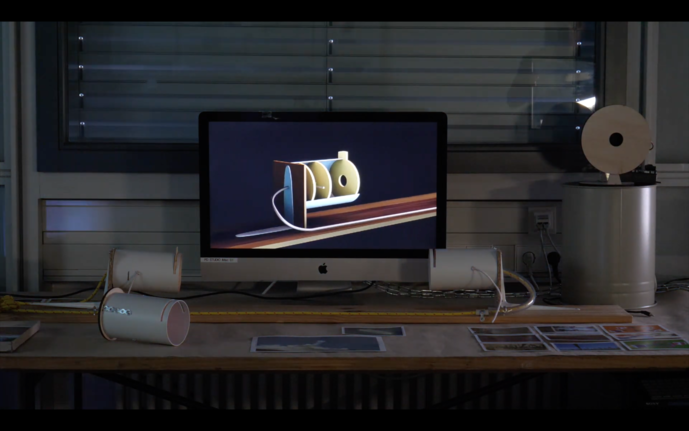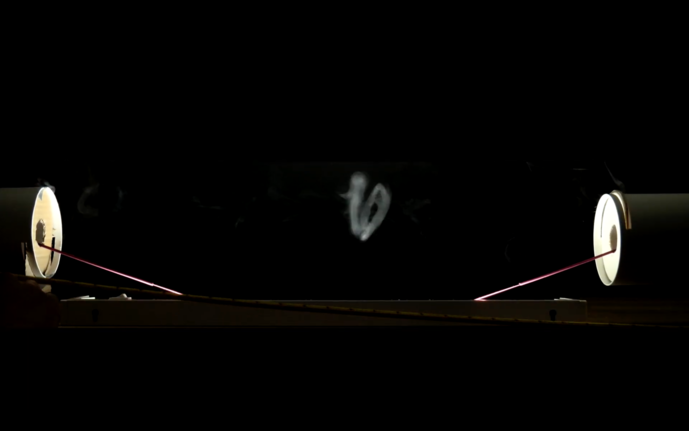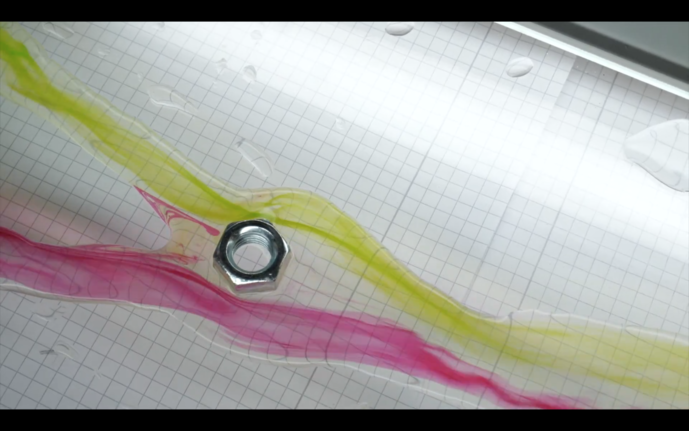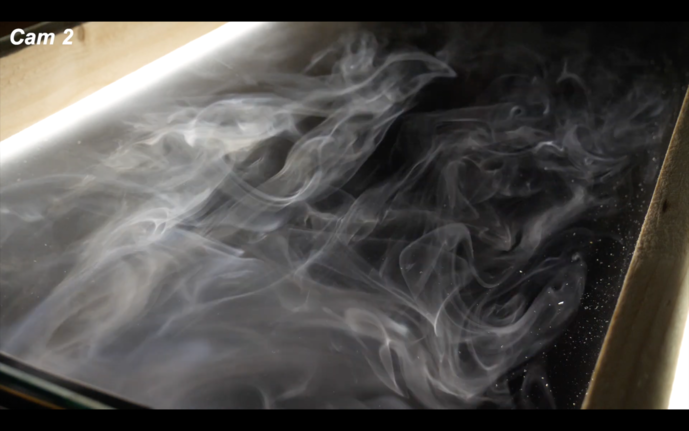

© Lukas Klein


© Lukas Klein


© Lukas Klein


© Lukas Klein


© Lukas Klein
The experimental setups created during the Cloud Studies seminar explore fluids and gases and their physical effects. Each set-up attempts to visualise effects of fluid dynamics that normally remain hidden. Either through smoke in the air, or colours and hydrogen bubbles in water the fluid dynamics become momentarily visible. The experiments were conducted in parallel to a visual research into fluid dynamics. In nature air flow or aerodynamics are mostly visible through moving static objects or via clouds. Additionally, water flow or hydrodynamics become visible through light reflections within water. Many effects of fluid dynamics (such as the Kármán vortex effect or the Kelvin-Helmholtz instability) can occur in geological weather phenomena on a large scale and a small laboratory scale. The flow behaviour of linear-viscous Newtonian gases or liquids such as water or air cannot be precisely calculated in a mathematical system. To this day, the Navier-Stokes equation remains unsolved. Flows are usually simulated numerically with Computational Fluid Dynamics systems whereby only approximations to reality are generated.
Several experimental set-ups were developed during the seminar:
- The water setup, where water flows between two transparent plates.
- The dry setup, which shows the Kármán vortex effect in a wind tunnel.
- The wet set-up, in which water runs over an inclined plane.
- The electrolysis test setup.
- The hydrogen bubble setup, where hydrogen bubbles visualise the flow of water over an inclined plane.
- The vortex cloud collision setup, where two ring clouds collide.
The title Motion Design is intended to encourage to think about the definition of the term.
The documentation of this project can be found in videos collected in a link tree: linktr.ee/lukas.klein
Developed in the seminar "Cloudstudies" winter semester 2020/21
Supervision: Füsun Türetken